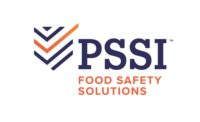The impact of COVID-19 on U.S. shopping habits and the snack and baking industry




COVID-19 is changing the way U.S. shoppers do their shopping. Many states are on lockdown, but both grocery stores and restaurants are considered essential businesses, and thus are allowed to remain open.
"As consumers settle into the new normal of social distancing or sheltering in place, they will be seeking products that bring comfort and joy. Look for these products to increase in sales week to week. Essentially, where half the American food dollar was spent outside the home, it will now be consumed in-home. Consumers will be need help to satisfy their continuous desire for new experiences and tastes," says IRI's March 26 report, "COVID-19 and the economy: Today's shoppers, history guide CPG and retail amid crisis."
Consumers want "guilty pleasure" snack foods, such as cookies and salty snacks. According to IRI's data, ending the week of March 15, the sale of cookies is up 50.3 percent versus the previous year. Salty snacks is up by 51.5 percent, and ice cream/sherbet is up by 34.5 percent.
"People have stocked up on pantry staples and we’re already seeing signs that they’re turning their attention to more comforting and indulgent products," says Joan Driggs, VP of content and thought leadership, IRI, Chicago.
Driggs says that we know from past recessions that people will be looking for more affordable products, but we also know that CPG products are fairly recession proof.
"Many retailers have amazing private brand offerings and consumers will begin testing those products, as well as lower-priced brands. It’s a great opportunity for retailers and lower-priced brands to hang on to consumers even as we recover from the down economy."
As for foodservice, "our current situation is so much worse for the foodservice industry than any prior recession. With a typical recession, consumers choose where to rein in their spending. They’ll give up a gym membership or stop getting their nails done; maybe cut back on salon visits and curb their away-from-home spending. With COVID-19, those decisions have been made for them," says Briggs.
"Many restaurants are still offering take-away, but revenues from take-away cannot match a restaurant’s regular receipts. It will also be a tougher return to normalcy, as even people anxious to dine at restaurants will have to wait for restaurants to fully come back on line. Many workers may have migrated to retail or fulfillment; supply chains will have to be restarted; it will be a long haul," she predicts.
IRI's March 26 report says that consumers are likely to shift their spending and shopping behaviors in response to COVID-19. These shifts include:
- Decrease in brand loyalty as consumers try new brands in low-stock environment
- Revival of center-store with quarantine reintroduces consumers to shelf-stable categories and brands purchased in stock-up and more meal components as consumers return to cooking a majority of meals and seek new recipes to combat boredom
- Continued stock-up behavior to continue for the next few weeks, driving outsize growth in large format, including Grocery, Mass and Club, all of which are poised for sustained strong growth beyond stock-up as consumers continue to divert spending from restaurants and other away-from-home venues
- Increased purchases of comfort / indulgent and entertainment categories to deliver some joy during difficult days of at-home confinement
- Greater shift to online home shipment and click & collect, with consumers seeking products they cannot find in store and/or in an effort to reduce contact with others in stores
- Convenience and Gas channel potentially emerging as a close-to-home, easy-access option for necessities, particularly in urban areas
- Opportunities for retailers to fill the void for consumers, including gourmet coffee and prepared foods, for instance, as “nonessential” retailers close their doors.
The IRI survey says that retailers should prepare for more "indulgent assortments," and manufacturers should be aware of the emotional toll prolonged home confinement will have on consumers. IRI recommends offering products that help keep daily routines stable, such that those that promote sleep, or products with Vitamin D, as well as products with more fiber.
Looking for a reprint of this article?
From high-res PDFs to custom plaques, order your copy today!












